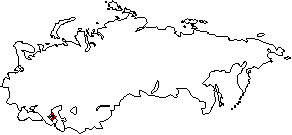CONTENTS
IntroductionForeword
Language Groups
Tribes and Dialects
Order the book
The Peoples
of the Red Book
Abazians (Abaza)Abkhaz
Aguls
Akhvakhs
Aleuts
Altaics
Aliutors
Andis
Archis
Asiatic Eskimos
Bagulals
Baraba Tatars
Bartangs
Bats
Bezhtas
Botlikhs
Budukhs
Central Asian Jews
Chamalals
Chukchis
Chulym Tatars
Crimean Jews
Crimean Tatars
Didos
Dolgans
Enets
Evens
Evenks
Georgian Jews
Godoberis
Hinukhs
Hunzibs
Ingrians
Ishkashmis
Itelmens
Izhorians
Kamas
Karaims
Karatas
Karelians
Kereks
Kets
Khakass
Khants
Khinalugs
Khufis
Khvarshis
Kola Lapps
Koryaks
Kryz
Kurds
Lithuanian Tatars
Livonians
Mansis
Mountain Jews
Nanais
Negidals
Nenets
Nganasans
Nivkhs
Nogays
Orochis
Oroks
Oroshoris
Peoples of the Pamirs
Roshanis
Rutuls
Selkups
Shors
Shughnis
Tabasarans
Talysh
Tats (Tatians)
Tindis
Tofalars
Trukhmens (Turkhmens)
Tsakhurs
Udeghes
Udis
Ulchis
Veps
Votes
Wakhs
Yaghnabis
Yazgulamis
Yukaghirs

THE TRUKHMENS OR TURKMENS
Habitat. The Trukhmens live mainly in the Stavropol district.
Population. According to S. Tokarev, there were about 15,000 Trukhmens in 1958. No other information exists.
History. The Trukhmens migrated into the Caucasus in the 17th century. In Russian sources of the early 19th century, all Turkmens are called Trukhmens. In their cultural mode of life, the Trukhmens of today differ very little from their neighbouring peoples. They have evolved from nomads into a semi-settled or settled people.
Origin. Most of the Trukhmens belong to the tribes of Chaudorov (Chavodur), Sonchadj or Ikdir.
Language. The Trukhmen language belongs to the Oguz group of Turkic languages. It has maintained its Turkmen linguistic originality but has been strongly influenced mainly by the Nogai language in the Kipchak group. N. Baskakov's opinion is that it is most likely a dialect of the Turkmen language rather than an original Turkic language. The phonetic system, grammatical structure and, to some extent also, the vocabulary, have been somewhat influenced by the Nogai language.
The main reason for any dialectic differences observable in the Trukhmen language is contact with other ethnic groups (adstrates), i.e. the Nogai or Kumyk adstrate.
Literature in the Trukhmen language is non-existent. The Trukhmens use Russian as their literary language.
REFERENCES
- Н. Баскаков, Введениие в изучение тюркских языков, Москва 1969
- С. Куренов, Некоторые историко-лингвистические сведения о северо-кавказских (ставропольских) туркменах. -- Известия АН ТССР 4, 1958
- С. Куренов, Особенности туркменского говора Северного Кавказа (Ставрополья). Автореферат, Ашхабад 1959
- С. А. Токарев, Этнография народов СССР. Исторические основы быта и культуры, Москва 1958
LV